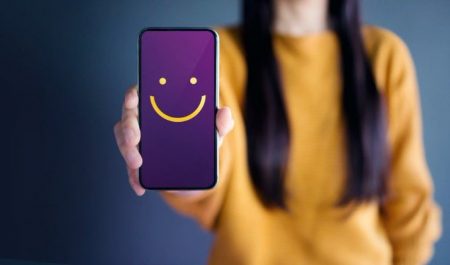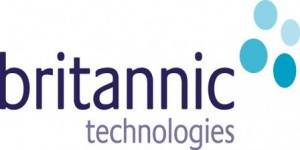How Contact Centres are using Voice, Video and Cobrowse to Elevate Online Customer Experience

What has changed, though, is the way that customers choose to interact with brands, and how many touchpoints are now involved in a single customer journey. As digital channels become increasingly popular, the need for contact centres to adapt to changing customer behaviour is paramount to their future success.
Modern customers choose to use multiple channels to shop and communicate with companies. This means it’s important than ever before that customers have a unified experience across every touchpoint. Online customers, just like any customers, don’t want to have to change the environment they’re already in to complete a task. This also includes having to communicate with the contact centre if they have a question.
Despite multiple new contact channels emerging, the most popular choice for customers is still being able to speak with an agent over the phone, particularly when the emotional importance and value is high for the customer. Voice isn’t only important for customers either, as 95% of C-suite executives, IT management employees and CIOs say that voice is valuable to their organisation. Human to human connection is still a priority for most customers, particularly if they have a complex or important query to solve.
The fact is, voice is still a vital factor for contact centres. We can’t see contact centres going human-free anytime soon- can you? But as digital continues to infiltrate people’s lives, contact centres must be secure enough to maintain a reliable service whilst being agile enough to integrate new communication channels to improve CX and remain relevant.
Organisations need to invest in new technologies that offer customers a seamless, joined-up experience whilst at the same time maximising contact centre efficiency.
Chat is a necessity
Live chat is one of the fastest growing communications channels being adopted by contact centres in an effort to communicate with customers directly though their website. Text-based communications is the most popular form of communication, particularly amongst the millennial demographic.
Chat enables a direct communication channel with instant responses, so agents can have a real conversation with customers as they browse through a website. It is easy to use, fast and effective for both customers and contact centres, making it a hugely successful channel which has seen its popularity rise exponentially over the last few years. Contact centres also benefit, as web chat improves agent productivity, boosting efficiency by lowering resolution times and improving satisfaction simultaneously.
The increasing popularity of chat is a testament to its effectiveness as a tool. However, the adoption of chat as a mainstream contact channel also highlights that it is no longer a nice-to-have, but a necessity for contact centres and is no longer a competitive differentiator. Rather the opposite.
With chat becoming more mainstream, contact centres are incorporating new ways to engage customers and improve internal efficiency.
Voice-first cutting edge technologies
The rise in digital channel usage affects all elements of the customer journey, from awareness to service to sale. Business functions such as marketing and development are primarily adopting mobile-first strategies to align with shifting customer behaviour.
As it stands, customers who primarily use their smartphones to browse and interact with companies are forced to leave the website environment to make a call, something which involves multiple calls-to-action and stages. This convoluted process can result in customers abandoning the call, resulting in a decrease in inbound calls to the contact centre.
Web calling is increasing in popularity, as this offers customers the option to generate a voice call at the click of a button, directly through websites, without the need for dialling. Although web calling is internet based, calls can be directed as a standard PSTN call to fixed lines and mobile devices using SIP. This allows businesses and contact centres to embed website-based communication with their existing telephony and contact centre solutions.
Web calling solutions are proven to increase inbound calls generated from websites. To provide a completely seamless experience, web calls can be escalated from chat interactions at the click of a button, allowing the same agent to continue the conversation with the customer or re-route the enquiry to the right team member or department.
Chat and conversational bots alleviate the pressure on contact centre teams, who can handle multiple chats concurrently and reduce wait times. This allows agents to quickly assist customers with simple queries, affording them more time to dedicate to complex enquiries, nurture warm leads and pursue sales opportunities.
Use video and cobrowsing to create an immersive website experience
Imagine a customer walking into a store, looking for something specific which they are having trouble locating. An in-store consultant is able to take them straight to the item they’re looking for, saving the customer time and increasing the probability of purchase.
Wouldn’t it be easier if that agent could see what you’re seeing, help you fill out the form faster and with less hassle?
With more brands, products and services available than ever before, companies are becoming increasingly focused on delivering the ultimate customer experience to differentiate themselves from their competitors. To achieve this, companies are adopting new channels to solve common customer service problems faster and more intuitively.
Video calling is being used incredibly effectively by some retailers to bridge the gap between their offline and online customer bases. One major high-street retailer in the UK uses video calling to provide customers with personal shopping services, fitting services or simply face-to-face consultations. The retailer, with 29 stores across the UK, prides itself on giving customers exceptional customer service in-store, and has an ambition to leave all their customers feeling confident about themselves every time they visit their stores.
However, with a growing online segment and the opening of international stores, the retailer wanted to translate this brand experience to remote customers, or purely digital customer who otherwise might not fully understand what that experience feel like.
Agents use one or two-way video calling as a method of connecting face-to-face with customers, directly through the website. Video calls can be escalated from chat interactions, or initiated separately by customers, providing flexibility to customers to communicate with agents in their preferred method. The interaction data is integrated with their Mitel Contact Centre, allowing the department to manage workflows from multiple channels in the same place.
At the same time, the customers gain a unique, personalised experience on the website which has resulted in a near 90% customer satisfaction rate.
Companies across multiple sectors are also taking note of this movement, and are adopting video into their contact centres to provide customers with remote consultations and appointments, as they would in a physical location.
Cobrowsing is also being used by companies to transform the customers online journey in ways never before possible.
Imagine that a customer is filling out a complicated form on a website, and they are unclear about how to fill out certain fields. They can’t find the answer on the website, so they call the contact centre and an agent is able to assist over the phone. It’s a complicated process, and the customer is having trouble articulating what they can see on the screen.
Rather than watching someone else guide through the website as with screen-sharing (which can be dull for the customer and tedious for the agent), cobrowsing means the customer and agent can share the navigation and actually assist in completing tasks for the customer when needed, which helps to reduce resolution times for contact centre staff.
It is used by companies as a collaborative tool for building a better rapport with the customer through an in-person experience. As such, not only are queries resolved quicker, online customer experience is improved at the same time too.
Cobrowsing sessions are typically used alongside chat or voice interactions, to simulate in-person browsing experience. The agent can annotate and label the screen and share navigation to provide expert guidance to customers. Page push functionality can also be used to direct customers to different areas of the website seamlessly, in a completely secured way.
All of these tools allow agents to better understand and solve problems, and advise on complex products to assist the customer in making the right choice. This achieves an immersive, interactive, virtual in-store experience for the customer.
Contact centres are increasingly integrating new channels which focus on improving customer experience.
With the smartphone revolution, the enhancement of IoT and social media, a website is now a key communications channel, in a way it never was before. Where a website used to be a supportive marketing element or a ‘shop window’, it is now the most important part of your customers’ journey. By using tools which both integrate seamlessly with contact centre environments as well as delivering exciting and highly personalised experiences together, contact centres are raising the bar of customer experience and bridging the gap between digital and in-person experiences.
Additional Information

For additional information on Talkative visit their Website

For additional information on Britannic Technologies visit their Website or view their Company Profile




